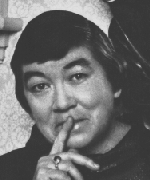Margaret Laurence
Critique

Born
1926
Died
1887
Publications
Novels, stories
Writing languages
English
Literature
• A Jest of God (1966)
• The Diviners (1974)
Novels
• A Jest of God (1966)
• The Stone Angel (1964)
• The Diviners (1974)
Canadian Literature
• The Stone Angel (1964)
• A Jest of God (1966)
• The Diviners (1974)
CanLit without quotation marks
In the hearts of Canadians of a certain age, Margaret Laurence has a special place as the first great novelist of their own country they ever read. Morley Callaghan had earned a large international reputation decades earlier and Hugh MacLennan had become the chronicler of Canadian sociology in fiction. But Laurence was in the vanguard of a new era of writing that would satisfy Canadians' needs both to see their own experiences in fiction and to to draw the attention of the world.
Like great literature throughout history, her writing sprang from deep local sources but appealed to the universal. With the emergence of Laurence, Mordecai Richler and Robertson Davies in the 1960s and 1970s, you could talk for the first time about great Canadian writing the same as you could refer to modern American literature or the English novel. World-class stuff. CanLit without quotation marks.
Of course, Laurence never thought of herself as helping launch a new era in Canadian literature, as far as I know. She just wrote to the best of her ability the stories she wanted to write, and it is as stories—not as historical trendsetters—that her works have to be judged today.
Her novels are de rigueur in Canadian schools, and many of us still feel we must read and praise them. But upon revisiting them today, I find I cannot avoid the conclusion that they are good, perhaps very good, but not great works of art.
Her most acclaimed work may be her last big novel The Diviners (1974), which won the Governor-General's Award, Canada's highest literary honour at the time. This is a rambling first-person account of a writer's life, from impoverished beginnings to accomplished middle age. It is slightly more experimental in style than her other work, very much a piece of the 1970s. Enjoyable and worthy. But, reading it today, one can too often see the mechanisms of craftsmanship at work—admirable but not transcendent.
The novel perhaps best known to students, The Stone Angel (1964), is a more tightly controlled tale about the life and death of an elderly woman, told from her own perspective.
Underrated novel
The work in which Laurence is most successful as a naturalistic writer may be A Jest of God (1966). This underrated novel may, I think, actually stand the test of time along with Stone Angel. The straightforward story depicts a lonely woman teacher in a small town (Laurence's fictional Manawaka) who engages in her first desperate affair. The woman's life, lover, family, fellow-townspeople—they all appear just what they are, nothing seemingly contrived for the sake of the plot. A moving yet realistic story.
A Jest of God also won the Governor-General's Award and was made into the equally sensitive film Rachel, Rachel in 1968, starring Joanne Woodward and directed by Paul Newman. The film was nominated for four Academy Awards.
Laurence's earliest works were not located in Canada at all. The novel This Side Jordan (1960), her stories in The Tomorrow-Tamer (1963), and the memoir The Prophet's Camel Bell (1963) were all set in Africa where her engineer husband had been stationed. She wrote them after returning to Canada in 1957. Oddly, it was after separating and moving to England in 1962 that she wrote most of her Canadian-set books: The Stone Angel, A Jest of God, The Fire-Dwellers (1969), and A Bird in the House (stories, 1970). The Diviners was completed and published after she returned to Canada in the early 1970s.
Her later years were devoted to writing popular children's books, most notably The Olden Days Coat (1979), about a young girl who finds an old coat that takes her back in time during Christmas. In 1982 it was made into a short film that has become a seasonal favourite.
— Eric
Critique

